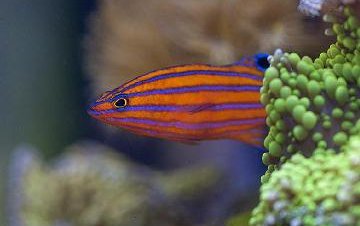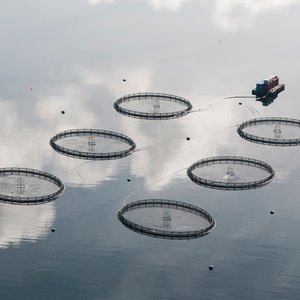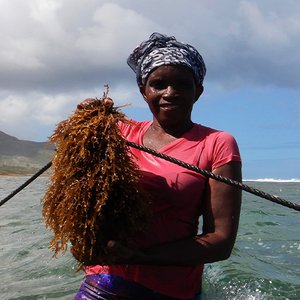Adult Candy Basslet. (Courtesy Photo: Sanjay Joshi)
Riverhead, USA - Long Island Aquarium has announced that after years of focused effort, Aquaculturist Todd Gardner has successfully raised reef basslets through its entire larval stage, hopefully paving the way for more widespread aquaculture of these rare and expensive fish
The reef basslets (Liopropoma sp.) are a group of small colorful fishes closely related to groupers. Their bright coloration and peaceful demeanor make them highly desirable to aquarium hobbyists, but the great depths at which they are found (more than 500 feet for some species), as well as their secretive habits make them extremely difficult to catch. As a result, they command a very high price (around $100 to more than $1,000, depending on the species) when they are available.
Their high price and limited availability make them a target of aquaculture research for decades, however, their long and complex larval stage (the period between hatching and settling down for their adult existence) has prevented them from ever being raised in captivity. In the wild, basslet larvae spend months drifting in the open ocean before they settle down for their life on a coral reef.
Gardner's work at the Aquarium began in earnest about three years ago, after receiving two reef basslets as a gift to the Aquarium, but his interest in basslet aquaculture has spanned almost 15 years. This time, however, after a fateful 69 days, this batch of about 12 has moved into the ever-elusive settlement stage and can be found successfully living in crevices in their tank behind-the-scenes at the Aquarium.
Gardner believes that it's a combination of elements that added to this current batch's success - from finding the right first food for the baby and just the right time to feed it, to selecting the right tank size, shape, and even color, perhaps even the way in which he collected the microscopic eggs, separated and disinfected them.
"This is our first, big step - it's big news and we are excited," enthuses Gardner. "We hope with each successive attempt, we are able to get more to survive and to produce a lot more of them to study."
The research done at Long Island Aquarium and Exhibition Center has attracted attention from the aquarium industry, as well as from scientists at the Smithsonian Institution who were happy to have their first opportunity to see photos and videos of some of the unique physiological adaptations of these larvae in a live fish rather than a preserved specimen collected at sea. Gardner's other current research projects are seahorse and clownfish aquaculture.
Video: Liopropoma larvae being raised by Todd Gardner at The Long Island Aquarium:











